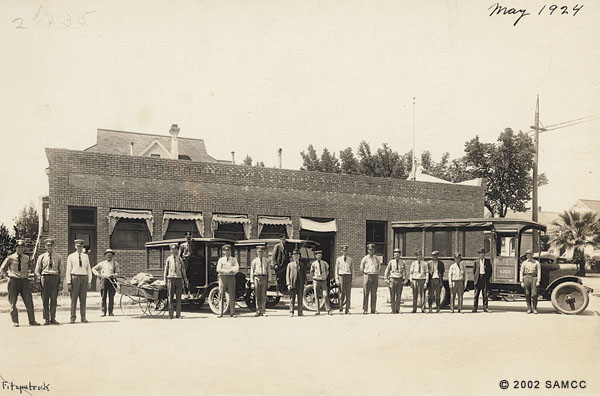Imagine a green industry located within District 5 - transportation oriented, sustainable, and hey! These are really cute!
parking?
If so, several MIT researchers may have just the thing for you. A team at the Cambridge, Mass.-based university is working on a design project for the City Car, a foldable, stackable two-seater vehicle. No, that's not a typo. The frame of the car is designed to fold in half so the cars can be stacked up eight deep in one city parking space.
Franco Vairani, a Ph.D. candidate at MIT and one of the original designers in the City Car project, said his team is taking a vending-machine approach to city travel. In his vision of the future, people would find a stack of electrical-powered City Cars on nearly every block in the city. When a user would want to drive somewhere in town, he would swipe a smart card or cell phone across an electronic reader and take a car out of the stack. When he gets to a business meeting across town, a shopping mall or their doctor's office, the driver simply leaves the car in a stack at his destination. The drivers don't own the cars. They simply rent them. It's fully self-service. The next person takes a car out of the stack, and off he goes.
The City Car, a foldable, stackable two-seater vehicle. (Photo courtesy of Franco Vairani/MIT Smart Cities)
Time magazine recently named the project one of the Best Inventions of the Year.
According to Vairani, the team is trying to rethink the relationship between cities and automobiles.
"At one point, I was having a conversation with Will [Lark], and we wanted to find a solution to parking," said Vairani. "There's a huge number of cars in parking garages, on the side of the roads. They don't do anything for eight hours a day, and then they go a few miles, and then they don't do anything again. What if people didn't own them? What if they used them and then folded them up and stacked them away?"
The City Car team is in the process of having a prototype of the vehicle built. Vairani said General Motors Corp. sponsors the Media Lab where his team works, but it doesn't have an agreement with any manufacturer to buy the plans.
The two-seater is designed to weigh 1,000 to 1,500 pounds, according to Vairani. Right now, it's expected to cruise at average city speed limits and may even be capable of topping 100 miles per hour.
One of the more interesting aspects of the design, said Vairani, is that electric motors will be built into each wheel, along with mechanisms for steering, braking and the suspension. "It's a robotic unit that is completely independent, and it's a wheel," explained Vairani. "Inside the wheel, we pack pretty much everything needed to move a car. The car has four of these wheels, and that's what drives the vehicle forward. The car doesn't have an engine. There are no gears. No transmission. This is a very efficient way of using energy."
« Prev
1
2
Electric-powered City Cars could be stacked on nearly every block in the city. (Photo courtesy of Franco Vairani/MIT Smart Cities)
He also said having so much of the technology in the robotic wheels frees up a lot of space throughout the rest of the vehicle, allowing the team to make it collapsible. Vairani noted that there is a hinge in the frame beneath the passenger cabin. The cabin itself does not fold, but the frame that supports the cabin folds in half, pushing the cabin into a nearly vertical position.
While the vehicles are in the stack, waiting to be rented out, their lithium-ion batteries would be charging off the city's power grid. But the project is designed to give power back to the city, too. Solar panels erected on nearby buildings would feed energy into the charging stations and when the cars' batteries were full, the excess power would flow into the city's grid.
"It's definitely not going to solve all the problems," said Vairani, who added that a professor supervises the design team, which includes five students who work full-time on the project and 10 who work on it part-time. "It's about presenting an alternative to how we think about cars right now. The goal was to increase the efficiency of the whole transportation system. It's not going to be as efficient as mass transit, but it combines the advantages of personal mobility with ... the ability to take people exactly where they're interested in going. ... It's about how people move in the city."
http://www.computerworld.com/common/images/site/features/2007/112007/carstack9045925.jpg
"http://www.computerworld.com/s/article/9045925/MIT_reinvents_the_wheel_with_foldable_stackable_electric_car"

No comments:
Post a Comment